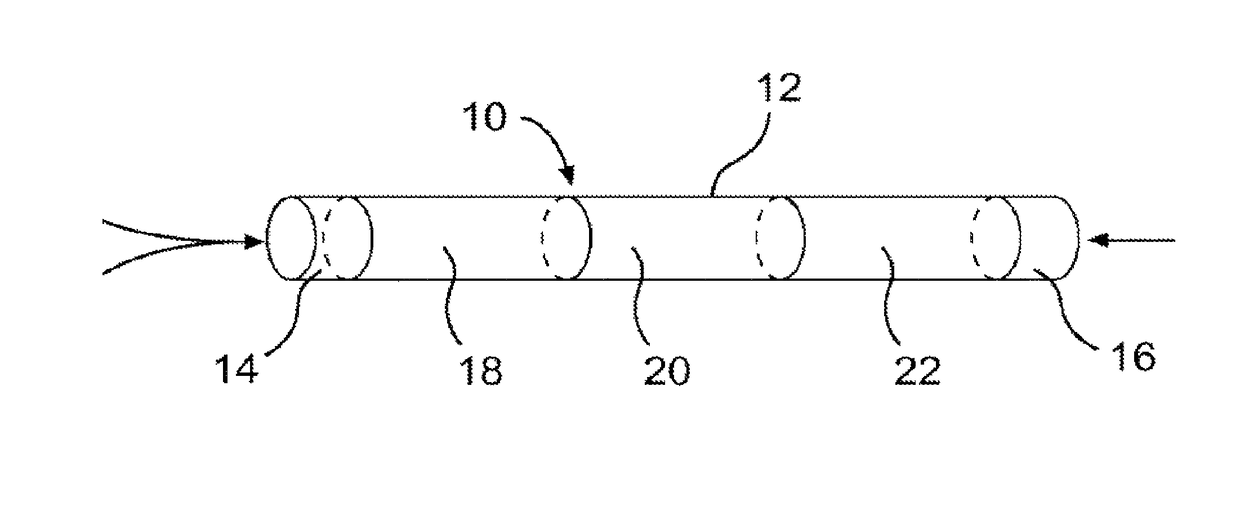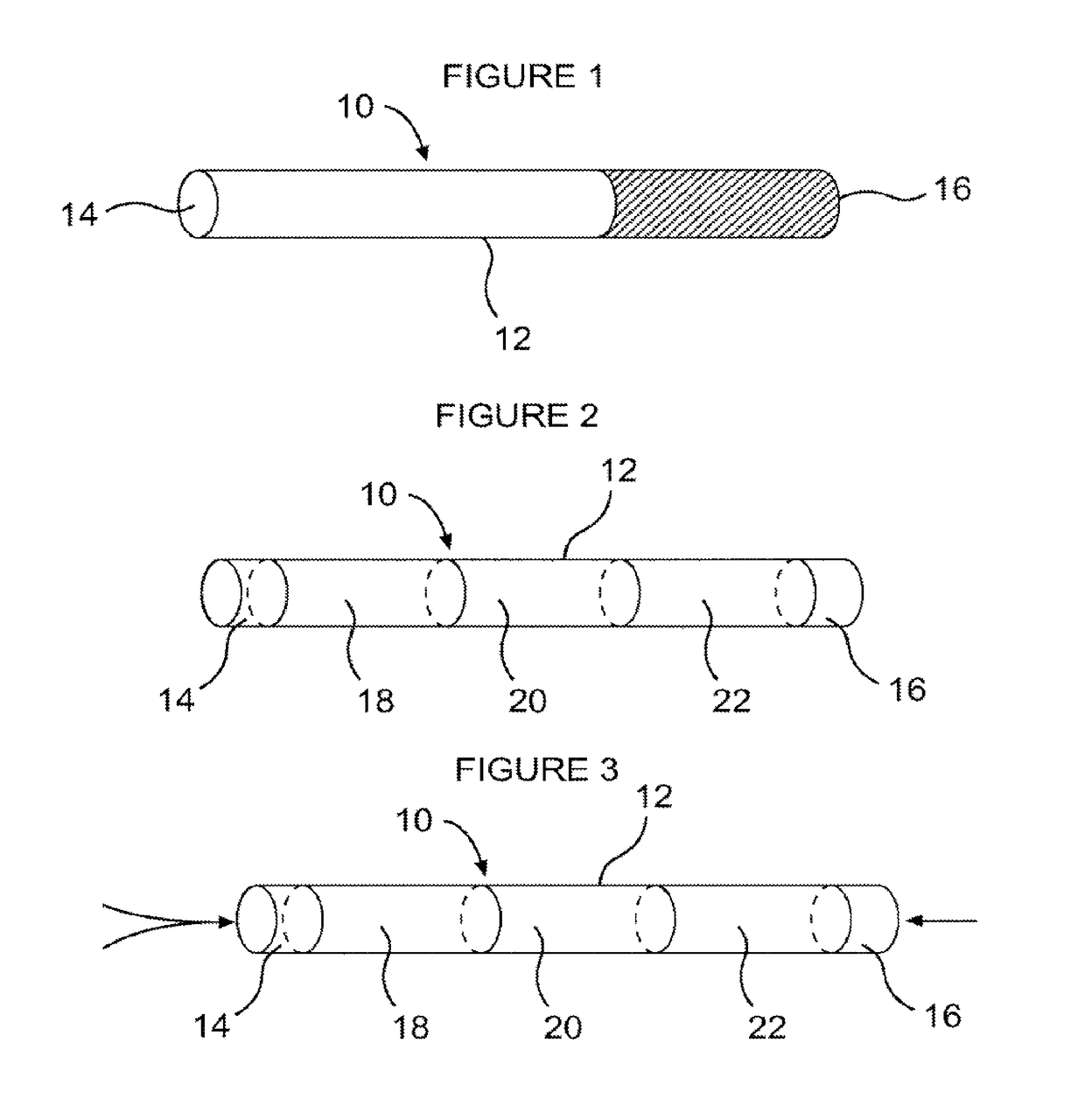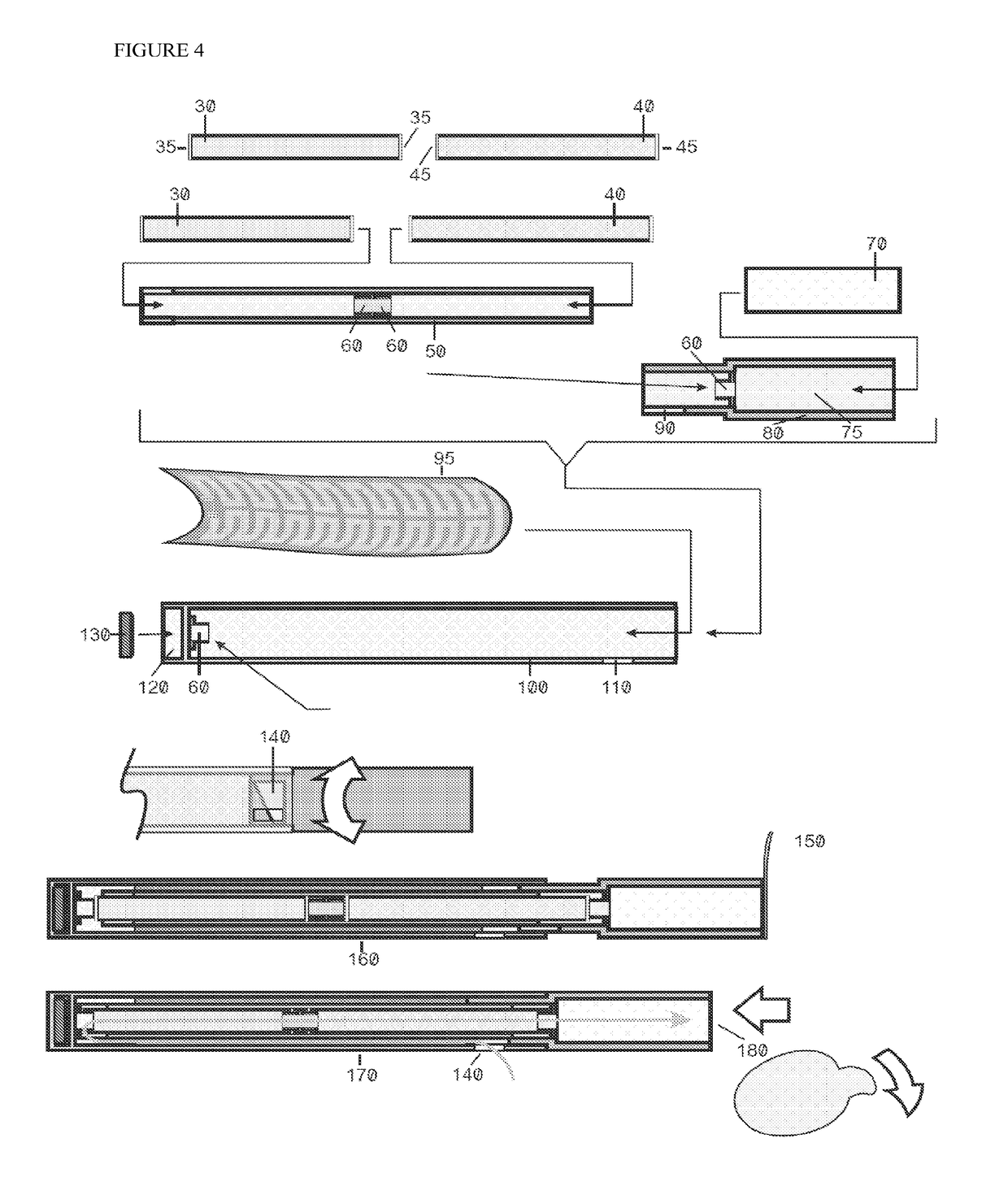Device and method for delivery of a medicament
a technology for delivering devices and medicaments, applied in the direction of aerosol delivery, tobacco, metabolic disorders, etc., can solve the problems of deterioration of medicaments, limited use of pulmonary delivery, and limited use of metabolites
- Summary
- Abstract
- Description
- Claims
- Application Information
AI Technical Summary
Benefits of technology
Problems solved by technology
Method used
Image
Examples
experiment # 1
Experiment #1: Screening for Suitable Chemical Agents for Nicotine to Improve the Efficiency of Aerosol Formation with Pyruvic Acid
[0242]Objective:
[0243]The current experiment was conducted to identify a suitable chemical agent for nicotine to form an efficient aerosol with pyruvic acid vapor.
[0244]Materials and Method:
[0245]Nicotine Bitartrate Solutions:
[0246]Nicotine base was prepared as per the following procedures:
[0247]About 16 mg of nicotine bitartrate (equivalent to 5 mg of nicotine base) was mixed with 200 mg of sodium hydroxide pellets in a side arm test tube and 1 mL of distilled water was added and vortexed [NaOH Nicotine base].
[0248]About 16 mg of nicotine bitartrate (equivalent to 5 mg of nicotine base) was mixed with 200 mg of calcium hydroxide in a side arm test tube and 1 mL of distilled water was added and vortexed [Ca(OH)2Nicotine base].
[0249]About 16 mg of nicotine bitartrate (equivalent to 5 mg of nicotine base) was mixed with 200 mg of potassium hydroxide in a s...
experiment # 2
Experiment #2: Pyruvic Acid Passed Over Nicotine Bitartrate and Potassium Hydroxide Mixture Under Exothermic Heat
[0265]Objective:
[0266]In the earlier experiments, it was noted that the heat released from the exothermic reaction played a significant role in enhancing the initial nicotine delivery in aerosol form. The current investigation was carried out to test the sustainability of the enhancement of nicotine aerosol delivery by exothermic heat. Nicotine bitartrate was used as a source of nicotine base for this experiment.
[0267]Materials and Method:
[0268]Alkalinized Nicotine Bitartrate Solutions:
[0269]Two different concentrations of alkalinized nicotine base were prepared using the following procedures:
[0270]About 250 mg of nicotine bitartrate salt (equivalent to 81 mg of nicotine base) was mixed with 500 mg of potassium hydroxide pellets in a side arm test tube and 1 mL of distilled water was added and mixed thoroughly.
[0271]About 125 mg of nicotine bitartrate salt (equivalent to ...
experiment # 3
Experiment #3: Pyruvic Acid Passed Over Nicotine Bitartrate and Potassium Hydroxide Mixture
[0281]Objective:
[0282]The current experiment was designed to investigate the nicotine delivery in aerosol form when the pyruvic acid vapor was passed over the alkalinized nicotine base. Nicotine bitartrate was used as the source of nicotine base.
[0283]Materials and Method:
[0284]Alkalinized Nicotine Bitartrate Solution:
[0285]About 500 mg of nicotine bitartrate salt (equivalent to 162 mg of nicotine base) was mixed with 1 g of potassium hydroxide pellets in a side arm test tube and 2 mL of distilled water was added and mixed thoroughly.
[0286]Pyruvic Acid:
[0287]About 1 mL of pyruvic acid was measured into a side arm glass test tube for each experiment and the air flow was introduced through a Pasteur pipette.
[0288]Testing Procedure:
[0289]The alkalinized nicotine base solution in independent side arm test tubes was immediately (so exothermic heat could be measured) connected to the pyruvic acid so...
PUM
| Property | Measurement | Unit |
|---|---|---|
| particle size | aaaaa | aaaaa |
| Mass Median Aerodynamic Diameter | aaaaa | aaaaa |
| Mass Median Aerodynamic Diameter | aaaaa | aaaaa |
Abstract
Description
Claims
Application Information
 Login to View More
Login to View More - R&D
- Intellectual Property
- Life Sciences
- Materials
- Tech Scout
- Unparalleled Data Quality
- Higher Quality Content
- 60% Fewer Hallucinations
Browse by: Latest US Patents, China's latest patents, Technical Efficacy Thesaurus, Application Domain, Technology Topic, Popular Technical Reports.
© 2025 PatSnap. All rights reserved.Legal|Privacy policy|Modern Slavery Act Transparency Statement|Sitemap|About US| Contact US: help@patsnap.com



